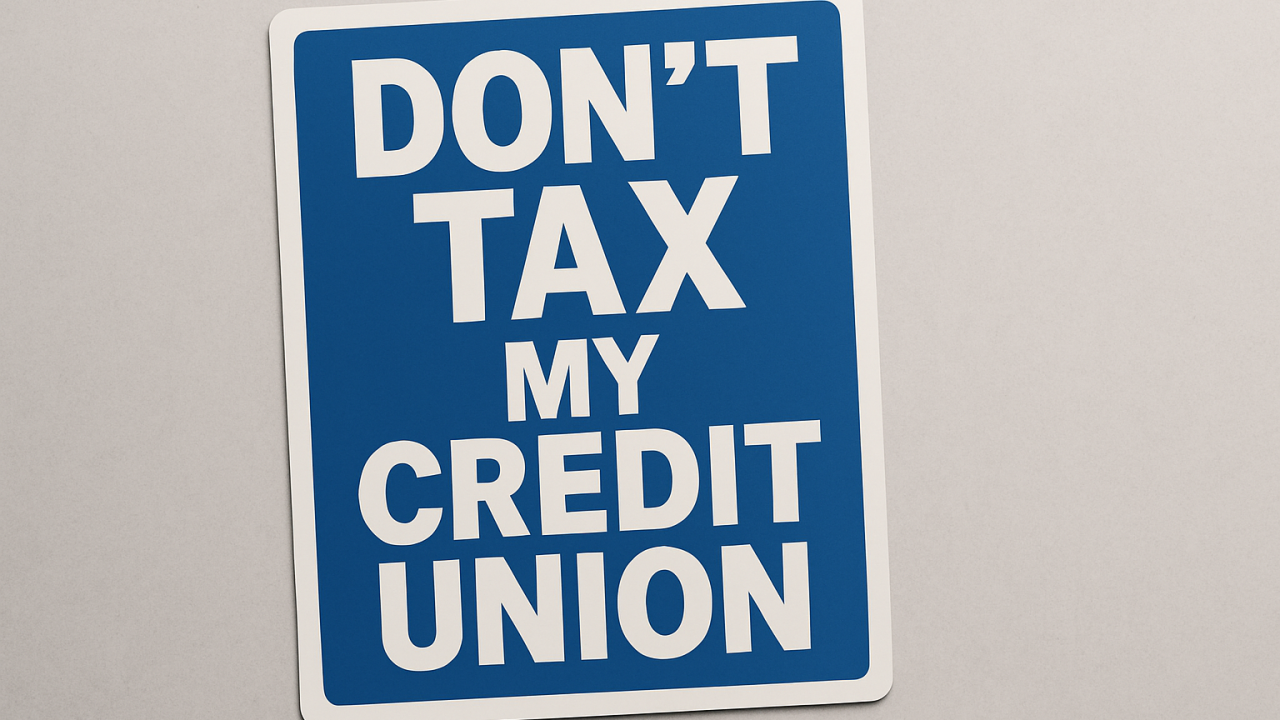Don’t Tax My Credit Union: A Renewed Call for Industry-Wide Vigilance
The credit union industry is once again preparing for a familiar policy battle: defending its not-for-profit tax status. Although the issue has been debated for decades, the reemergence of federal budget discussions and persistent lobbying from the banking industry have reignited concerns that credit unions could become a target for new tax revenue proposals.
The rallying cry “Don’t Tax My Credit Union” has returned, not as a political stunt, but as a reminder that this exemption is essential to preserving the unique role credit unions play in American financial life.
The Basis for the Tax Exemption
Federal credit unions have been exempt from federal income tax since 1937. State-chartered credit unions are exempt under Section 501(c)(14)(A) of the Internal Revenue Code[^1]. Congress has long recognized that credit unions are not-for-profit financial cooperatives that exist to serve members, not generate profit.
Credit unions return earnings to their members through lower loan rates, higher savings yields, and fewer fees. Their cooperative structure, guided by volunteer boards of directors elected by the membership, stands in contrast to the shareholder-driven model of banks[^2].
This tax status is not a loophole. It is a policy choice grounded in the recognition that credit unions serve a public good by advancing financial inclusion, especially among lower-income and underserved communities[^3].
Why the Debate is Heating Up Again
Recent discussions about tax reform and government spending have reopened the door to questions about tax exemptions. Bank trade associations are once again lobbying Congress to revisit the credit union exemption, often targeting larger credit unions in particular[^4].
Their argument is simple on the surface: some credit unions have grown substantially and now resemble community banks in terms of services and asset size. Bank advocates claim this makes the exemption unfair.
What this view misses is that growth does not alter the fundamental structure or mission of credit unions. Regardless of size, credit unions remain member-owned, not-for-profit, and democratically governed. Their earnings are used to improve member service, not to enrich investors[^5].
Potential Consequences of Taxation
Taxing credit unions would have far-reaching consequences for the communities they serve. According to 2023 data from America’s Credit Unions (formerly CUNA and NAFCU), credit union members received an estimated $21 billion in direct financial benefits through better rates, lower fees, and dividends[^6]. These benefits would be severely reduced or eliminated under a tax regime.
Moreover, taxing credit unions could accelerate consolidation. Many small credit unions already operate on narrow margins. If forced to pay federal income tax, some would not survive. Others might need to raise fees, reduce services, or limit their fields of membership in order to remain viable[^7].
This would disproportionately impact rural communities, minority populations, and low-income households who rely on credit unions for affordable access to credit.
Setting the Record Straight on Bank Comparisons
The banking industry’s push to eliminate the tax exemption often centers on the idea that large credit unions are “bank-like.” But while the products may overlap — such as checking accounts, auto loans, or mobile apps — the purpose, structure, and outcomes are entirely different.
- Ownership: Banks are owned by shareholders. Credit unions are owned by the members they serve.
- Governance: Banks are governed by profit-oriented boards. Credit unions are governed by volunteer boards accountable to the membership.
- Purpose: Banks prioritize shareholder returns. Credit unions prioritize service, financial literacy, and access to credit.
- Profit use: Bank profits go to shareholders. Credit union earnings are reinvested into member benefits or returned as dividends[^8].
In short, credit unions are financial institutions with a social mission. Their purpose is not to maximize profit, but to serve people — often people that banks overlook or underserve.

A Policy Choice with Long-Term Implications
Congress has periodically reviewed the credit union tax exemption and has consistently reaffirmed it. The last serious legislative attempt to revoke the exemption, during tax reform talks in 2013, led to a groundswell of advocacy. Millions of credit union members and staff contacted their representatives, ultimately helping to preserve the exemption[^9].
That campaign demonstrated the strength and unity of the credit union movement. But it also showed how quickly the issue can resurface, especially when federal revenue is under pressure.
America’s Credit Unions, the newly unified trade group, is already preparing for a possible policy fight. Their position is clear: credit unions should remain tax-exempt because their structure and mission fundamentally differ from for-profit banks[^10].
Member Advocacy Will Be Critical
The “Don’t Tax My Credit Union” campaign relies on member voices. When policymakers hear directly from constituents — particularly from rural districts or working-class households — it personalizes the policy decision.
Credit unions should consider:
- Launching email campaigns that encourage members to contact Congress.
- Hosting events or webinars on the importance of the exemption.
- Sharing real stories of how credit union membership improves lives.
- Partnering with America’s Credit Unions for coordinated messaging.
Every phone call, email, or social media post helps make the case. Advocacy is not just about protecting an industry. It is about protecting the ability of credit unions to serve their members and communities.
Staying Proactive
Right now, there is no specific legislation proposing to tax credit unions. But silence can be risky. Policymakers and their staff need to understand — consistently and clearly — why the exemption exists and who benefits from it.
The industry cannot wait for a threat to become a bill. Education and engagement must be ongoing.
Credit unions are one of the few remaining examples of financial institutions that prioritize people over profit. That’s worth defending. And that defense starts with telling our story — not just once, but every day.
Sources:
[^1]: IRS, Internal Revenue Code §501(c)(14)(A)
[^2]: NCUA, “Structure and Role of Credit Unions”
[^3]: GAO Report on Financial Access and Inclusion (GAO-22-104623)
[^4]: American Bankers Association, Tax Policy Position Papers
[^5]: NCUA, “Credit Union System Performance” Quarterly Data Summary
[^6]: America’s Credit Unions, Membership Benefits Report, 2023
[^7]: Filene Research Institute, “Credit Union Consolidation Trends”
[^8]: National Credit Union Foundation, “Credit Unions as Financial Cooperatives”
[^9]: Credit Union Times, “2013 Don’t Tax Campaign Mobilization”
[^10]: America’s Credit Unions, 2024 Federal Advocacy Agenda


